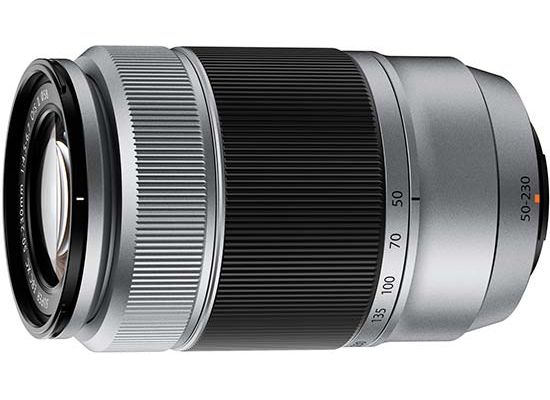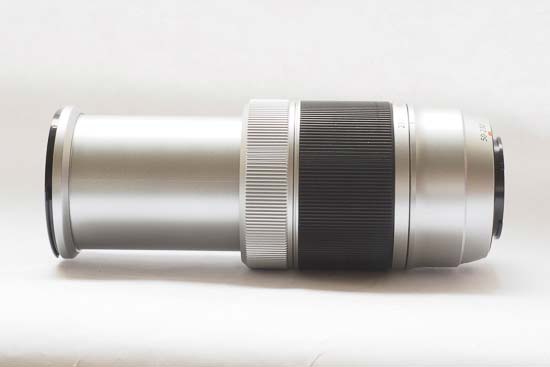All Categories
- Appliances
- Audio & Video
- Auto Accessories
- Baby & Kids
- Computers and Accessories
- Devices and Accessories
- Electronics
- Furniture
- Games and accessories
- Gift & Novelty
- Health & Beauty
-
Home & Garden
- Artificial Plants
- Bathroom Accessories
- BBQ
- Bedding
- Curtains
- Decor
- DIY
- Firepits
- Fountains
- Garden Beds
- Garden Furniture
- Garden Lights
- Garden Tools
- Gate Openers
- Green Houses
- Hammocks
- Home Office Accessories
- Inflatable Mattress
- Kitchen Bins
- Kitchenware
- Lighting
- Others
- Pool & Accessories
- Rugs
- Scales
- Shading
- Storage
- Travel
- Occasions
- Outdoor
- Pet Care
- Smart Home
- Sports & Fitness
- Tools
Fujifilm Fujinon X Lens XC 50-230mm F4.5-6.7 OIS II Lens


Fujifilm Fujinon X Lens XC 50-230mm F4.5-6.7 OIS II Lens

Introduction
The Fujifilm XC 50-230mm f/4.5-6.7 OIS II is a follow-up to the original lightweight, affordable telephoto lens that has been designed for the X-system. The XC in its name, as opposed to the XF of other Fuji lenses, denotes that is intended to be more affordable, particularly for users of Fuji’s cheaper models, such as the recent X-A10.
Mounted on an APS-C-sized sensor, the equivalent focal length of the lens is 76-350mm, making it ideal for wildlife, sports, or anything where the subject is some distance away.
Compared to the older model, Fuji says that this version offers better build quality, smoother operation, and an improvement in optical image stabilization. It now offers up to 3.5 stops of exposure compensation, compared with 3 for the previous model.
The lens features 13 all-glass elements in 10 groups, including 1 aspherical lens and 1 ED element.
Although it is likely to appeal to XA users, it can also be used on any of Fuji’s other X-series cameras, such as the X-E2S, XPro2, or X-T2.
The Fujifilm XC 50-230mm F4.5-6.7 OIS II costs £329 / $399.
Ease of Use
Considering the focal length this lens offers, it’s very lightweight, and not too oversized. When using it with one of the smaller cameras in Fuji’s line-up, such as the X-A3, it manages to stay reasonably well balanced - although you may find you need to use your free hand to secure it for the best experience.

Cameras like the X-A3 don’t have an inbuilt viewfinder, so you will have to use the screen to compose your images. This can be a little trickier when you’re using a long telephoto length lens on a small body, but the image stabilization does a good job of helping to keep the subject steady enough for you to compose your shot, even at the furthest 230mm reach.

The lens itself is very minimalist in approach. There are no buttons or switches on the lens. Unlike some XF lenses, there’s no aperture ring either, so you’ll need to make any adjustments on the body of whichever camera you’re using. On some older models, you may need to perform a firmware upgrade to be able to use the command dial on the camera to adjust the aperture.

Despite being one of Fuji’s cheaper models, the build quality still feels well put together, although it doesn’t match the highest quality of Fuji’s XF lenses. The lens has a plastic mount and barrel, but the silver finish of the sample we were provided with looks stylish enough.

In the middle of the lens is the zoom ring, which is fairly wide and has a ridged, rubberized grip. Just behind this, you’ll see markings for different focal lengths throughout the range to help guide you to the focal length you want. Zooming is not internal, so the lens will extend as you zoom in - the lens reaches its longest point at 230mm, but compacts away relatively well when in the 50mm position.


Just in front of the zoom ring is a manual focusing ring. It is ridged, but it doesn’t feature a rubberized coating. Its movement is fairly smooth and fluid, but with just enough give to make precise autofocus adjustments easy. There are no hard stops at either end of the focusing ring.
Optical image stabilization needs to be turned off in-camera, as there’s no switch or button on the lens itself.

The Fujifilm XC 50-230mm f/4.5-6.7 OIS II comes with a supplied plastic bayonet hood to be used to prevent flare in bright sunlight. You also get the front and rear caps.
Auto-focus
For focusing, the Fujifilm XC 50-230mm f/4.5-6.7 OIS II uses a high-precision stepping motor. Most of the time, the lens locked onto the target quickly, efficiently and quietly. Some hunting took place at the full 230mm focal length, especially if the subject was low contrast or erratic movement. The front of the lens does not move when focusing, which makes it suitable for use with various filters.
Focal Range
At the 50mm end of the zoom range, the Fujifilm XC 50-230mm f/4.5-6.7 OIS II has an angle of view of 31.7 degrees. The 35mm equivalent focal length is 76mm.
 50mm
50mm
At the 230mm end, the angle of view is 7.1 degrees. The 35mm equivalent focal length is 350mm.

Specifications
| Type | XC50-230mmF4.5-6.7 OIS II |
|---|---|
| Lens configuration | 13 elements in 10 groups (includes 1 aspherical and 1 extra-low dispersion element) |
| Focal length (35mm format equivalent) |
f=50-230mm (76-350mm) |
| Angle of view | 31.7°-7.1° |
| Max. aperture | F4.5-6.7 |
| Min. aperture | F22 |
| Aperture control |
|
| Focus range |
|
| Max. magnification | 0.2x (Telephoto) |
| External dimensions: Diameter x Length* (approx.) *distance from camera lens mount flange |
ø69.5mm x 111mm(Wide) / 177mm(Telephoto) |
| Filter size | ø58mm |
Tips for protecting your children online
In today's digital age, ensuring your children's safety while they browse the internet is paramount. As they explore the vast online world through smartphones, gaming consoles, laptops, and other devices, it's essential to implement measures to shield them from potentially harmful content and interactions. Here are some tips to help you safeguard your children online:
1. Communication is Key
Open and ongoing communication with your children about online safety is crucial. Discuss the potential dangers they may encounter online, such as pornography, cyberbullying, and violent content. Encourage them to come to you with any concerns or questions they may have.
2. Set Clear Boundaries
Establish clear rules and boundaries regarding internet usage. Define appropriate time limits for browsing and specify which websites and apps are off-limits. Make sure your children understand the consequences of violating these rules. You can also restrict some of these apps or online content utilising device level parental controls explained below.
3. Utilise Parental Controls
Take advantage of the parental control features available on devices and internet browsers. These controls allow you to block access to specific websites, set age-appropriate content filters, and monitor your children's online activities. Familiarise yourself with the parental control options on smartphones, gaming consoles, and laptops to effectively manage your children's online experiences.
4. Educate Yourself
Stay informed about the latest trends and technologies related to online safety. Familiarise yourself with popular social media platforms, gaming communities, and messaging apps that your children may use, including the functions they provide. This knowledge will help you understand the potential risks and take appropriate action to protect your children.
5. Monitor Their Online Activities
Regularly monitor your children's online activities to ensure they are adhering to the rules and staying safe. Keep an eye on their browsing history, social media interactions, and messaging apps. Be vigilant for any signs of cyberbullying or exposure to inappropriate content.
6. Encourage Safe Online Behavior
Teach your children about the importance of practicing safe online behavior. Remind them never to share personal information, such as their full name, address, or phone number, with strangers online. Encourage them to think critically about the content they encounter and to report anything that makes them feel uncomfortable or unsafe.
7. Lead by Example
Be a positive role model for your children by demonstrating responsible and respectful online behavior yourself. Show them how to navigate the internet safely and responsibly, and emphasize the importance of treating others with kindness and empathy online.
8. Reporting abuse, making complaints and finding more information
For additional resources and guidance on online safety, visit the Australian e-Safety Commissioner's website at www.esafety.gov.au. Here, you'll find a wealth of information, including tips for parents, educational resources for children, and tools for reporting online abuse and harassment.
You can also report abuse through the website’s online form.
By following these tips and utilising available resources, you can help keep your children safe from pornography, cyberbullying, violent content, and other unsafe material while they navigate the internet. Remember, proactive measures and open communication are key to fostering a safe and positive online environment for your family.













































































































